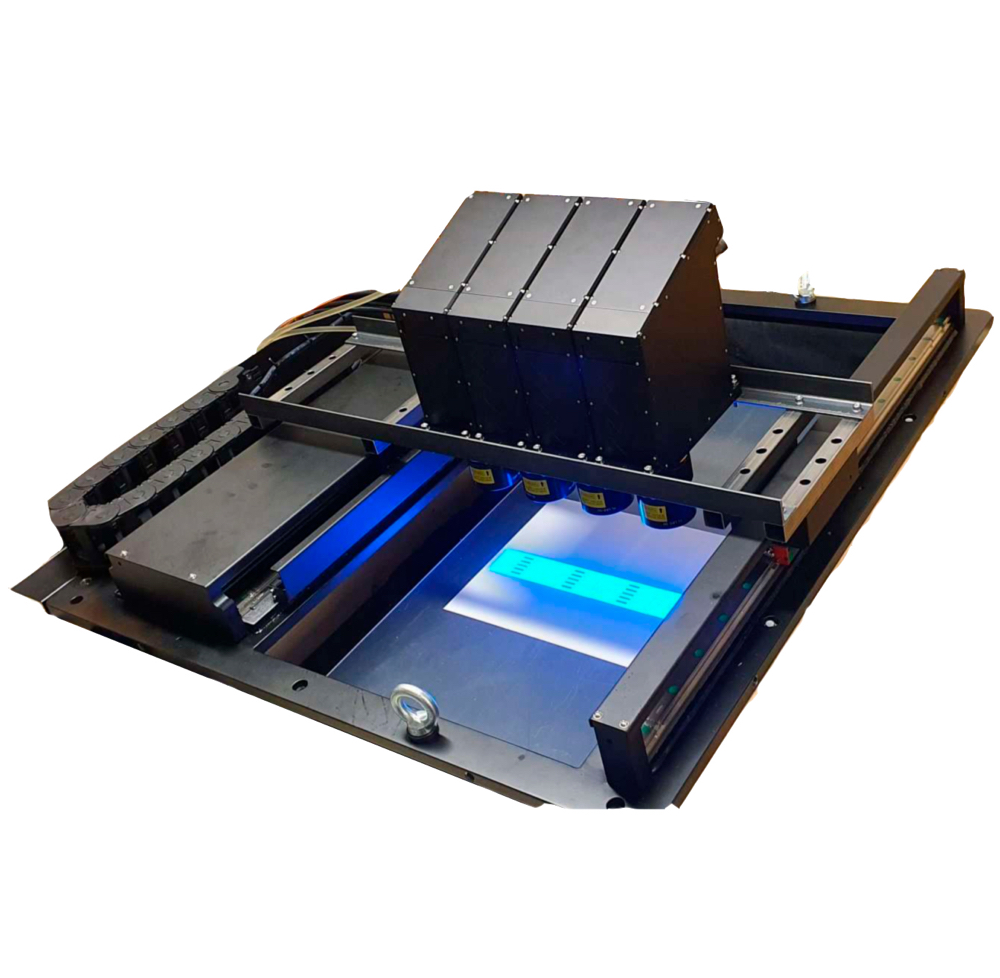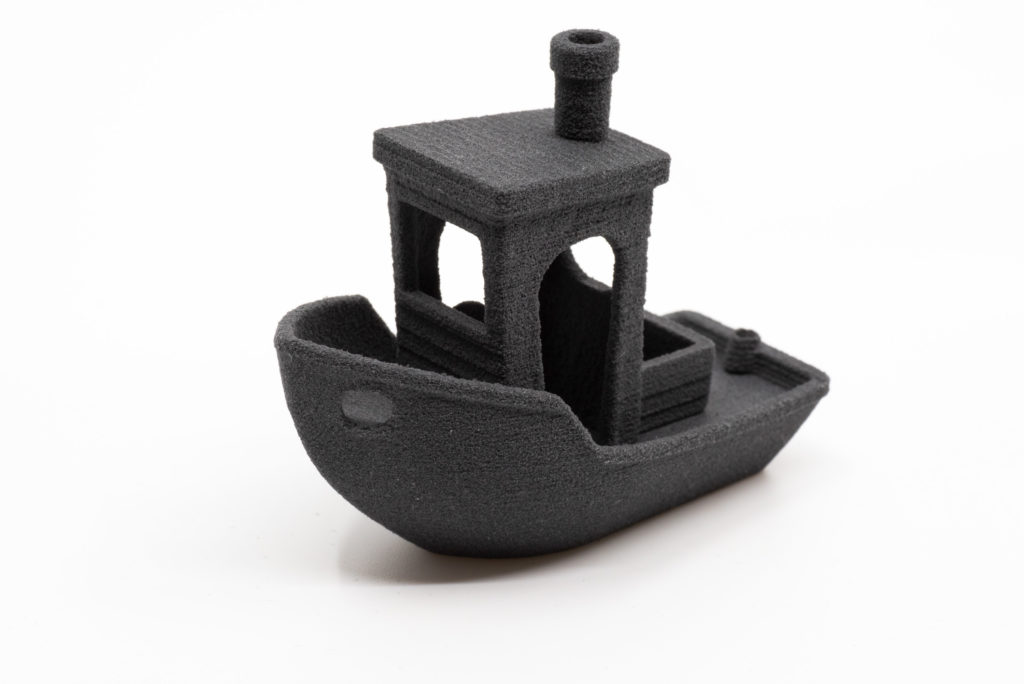Visitech Brings Scrolling, Thermal, and 8K DLP 3D Printing Stateside with Texas Factory
Visitech, a Norwegian manufacturer of digital light processing (DLP) projectors, has expanded its footprint with a U.S. location. The move was a natural for the company, which is developing some very unique applications for its technologies that some in the additive manufacturing (AM) industry may not be so familiar with. However, thanks to a recent appearance at the 2023 RAPID + TCT show, we were able to speak to Managing Directors Adam Kunzman and Alfred Jacobsen to learn more.
In part what sets Visitech apart from the rest of the 3D printing industry is that it is creating new subsystems and software that enable new capabilities for DLP systems. This includes scrolling print heads, projectors for powder bed fusion (PBF) printing, and 8K projection. In addition to discussing the company’s expansion into the U.S., the pair were able to explain the status of these latest technologies.
From Scrolling Printheads to Thermal Projectors
Visitech actually developed its scrolling systems for printed circuit board lithography before porting it over to 3D printing, where a series of up to four projectors can cure large vats of photopolymer resin. This scrolling technique, powered by Visitech software, is able to produce large quantities of DLP parts at an industrial level.

VISITECH’s LRS-MCx Reference Motion stage can use up to four UV DLP projectors or two NIR projectors. Image courtesy of Visitech.
“The know-how to go make a 24/7 capability, robust software, the testing and so forth, was basically built in an environment that wasn’t just a prototype shop. It was a production environment. So, we’re trying to provide an industrial professional product that will run continuously,” Kunzman said.
Visitech’s software is just as essential as the projectors themselves, as they enable the stitching together of a print job. For instance, when scrolling four projectors side by side above a vat, the software makes it possible to connect the various images being cast onto the resin.
“You’re taking high-resolution projectors on an XY stage and you have to make sure that the exposure, the power, the alignment all of that comes together so that all of the stitching of these different images from different projectors are coming together not just once, but all of the time.”
Having developed the technology over the course of the last several years, some Visitech customers have already developed machines featuring these scrolling projectors. This includes one unnamed user that created a printer with a half-square-meter print area and another with a machine for 3D printing ceramic parts at the 10-micron scale.
Now, the company is focused on its 4K and virtual 8K projectors. As a partner of Texas Instruments (TI), the company relies on TI digital micromirror devices (DMDs). With its latest 4K DMD, the projector is able to achieve higher resolution through the projection of even smaller pixels. Virtual 8K resolution uses a technique to shift the image by half-a-pixel diagonally. Visitech allows its customers to have full control over its software to implement this virtual resolution exactly how they want for their specific applications.
“It’s virtual 8K resolution. If you actually look at it, you will see distinct pixels in those spots. It’s not quite as pristine as what’s made with a native 8K chip, but it’s, say, 80% to 70% equivalent to a native 8K chip,” Kunzman explained.

The world’s first Benchy boat 3D printed using infrared for powder bed fusion. Visitech’s AM method, dubbed direct image sintering and developed by Visitech, has massive potential. Image courtesy of Visitech.
As for Visitech’s thermal projectors, which enables an PBF printing of thermoplastic powder, the product is still fairly new. The process, which the firm calls direct image sintering, relies on a TI DMD for casting near-infrared rays onto a bed of polymer in order to fuse entire layers at a time. Ideally attached to the scrolling motion system, this technology could someday rival HP’s Multi Jet Fusion or Stratasys’s selective absorption fusion, but it will take time for that to occur. Visitech is in the process of building samples and it will probably be another year or so before the company is able to release a production machine.
U.S. Expansion
Though Visitech has locations in Norway, China, Germany, the U.S., and Japan, it is still a fairly small company with just about 75 employees. With the purchase of Kunzman’s previous company Keynote Photonics, Visitech was able to establish a formal location in the U.S. However, it isn’t going to limit itself to sales and marketing stateside. With Kunzman as managing director, Visitech USA will be building out a factory in Allen, Texas.
Kunzman actually hails from TI, where he worked in the electronics giant’s DLP group. Visitech’s location near TI is, therefore, no accident. Outside of Dallas, the company will be establishing a factory to better support U.S. customers as the AM industry continues to grow.
“We found that, not just I, but several other folks who have spent some time in TI have gone out and started different things. There’s a core of expertise in how the electronics and firmware works, whether it be for 3D printing or other applications, and how to incorporate that know-how, and then combine that with the optics mechanics and the light source technology that all comes together in order to make a 3D printing subsystem.”
At this point, Visitech is growing quickly in an organic manner. For that reason, there’s no reason to expect that it won’t continue doing so. That means that, if a company like 3D Systems were to come in with a purchase offer, as it has done with other small AM companies, Visitech likely wouldn’t accept it.
Subscribe to Our Email Newsletter
Stay up-to-date on all the latest news from the 3D printing industry and receive information and offers from third party vendors.
Print Services
Upload your 3D Models and get them printed quickly and efficiently.
You May Also Like
AMT Shakes Up 3D Printing Market with Affordable, High-Performance Post-Processing Consumables
Additive Manufacturing Technologies (AMT), a global leader in automated 3D printing post-processing, is launching a new line of consumables that promises to significantly reduce operational costs for additive manufacturing users....
The Bambu Lab 3D Printing Platform… or Trapdoor?
Bambu Lab began as a completely closed 3D printing system, where the printer, software, and materials all functioned well but were exclusively from the company itself. This approach mirrored Formlabs,...
2025 Renault 5 E-Tech Electric Is Latest Car with 3D Printed Accessories
Due to the required numbers, additive manufacturing (AM) has struggled to make significant inroads into vehicle interiors in meaningful numbers—at least as far as public knowledge is concerned. Typically an...
BMW Completes Project to Automate Plastic 3D Printing
After a three-year journey to efficiently scale polymer 3D printed part production, the POLYLINE project has concluded. This endeavor, headquartered at BMW’s Additive Manufacturing Campus, pooled the expertise of EOS,...






























